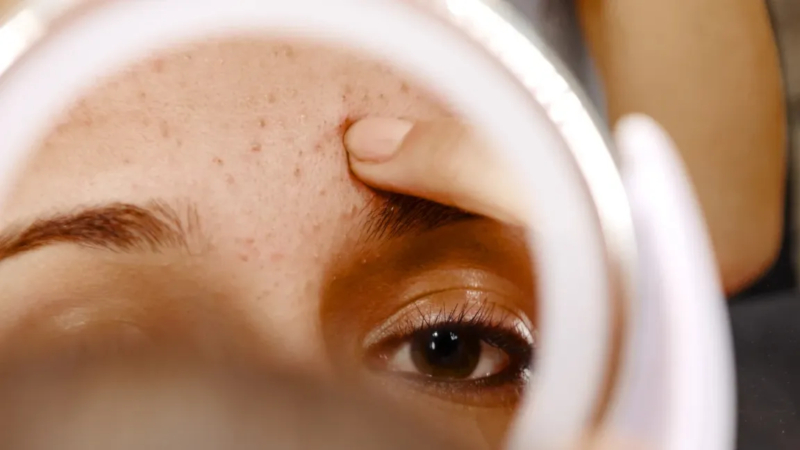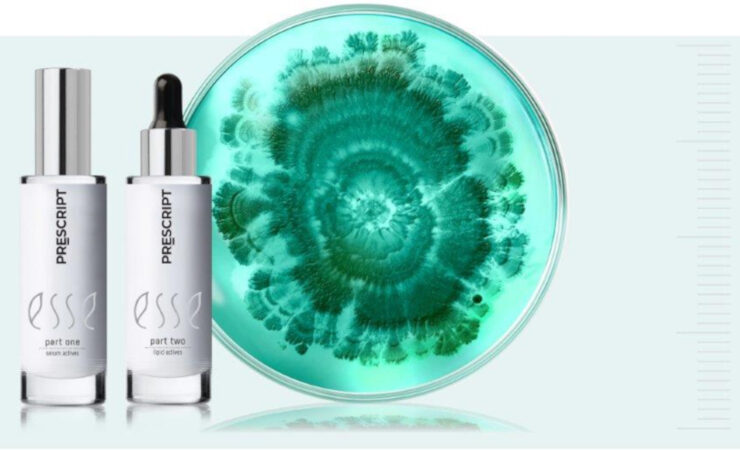Bye-Bye Blackheads: Expert Explains What Causes Them & the Best Way to Treat Them

Blackheads — to squeeze or not to squeeze this is the question that many of us have thought about. But, to effectively treat blackheads you need to start at the beginning… The root cause. To help you tackle blackheads head-on on Dr Alek Nikolic, aesthetic medicine specialist and owner of SkinMiles, delves into the nitty gritty of blackheads to explain what causes them and what is the best way to treat them.
Blackheads might be one of the most frustrating skincare woes, with the pesky spots seemingly popping up out of nowhere — a real nuisance when you’re trying to achieve flawless skin. It might be tempting to squeeze them or consider harsh treatments, but there’s a simple way to bid farewell to blackheads in the quest for clearer skin.
The solve? Adopt a gentle and consistent skincare routine, explains Dr Alek Nikolic.
What are blackheads?
Let’s start by understanding the science behind blackheads, and why they pop up unexpectedly. Blackheads are a form of acne, and the technical name is open comedone. There are two types of comedones — open and closed. Closed comedones are known as whiteheads. The dark appearance is due to oxidation when these substances come into contact with air.
Simply put, acne is a skin condition that occurs when hair follicles become plugged or blocked with oil and dead skin cells. It is most common among teenagers, with 70% to 87% being affected, and at least 25% of all adults being affected.
What causes blackheads?
Blackheads typically appear on the face, neck, chest, back and shoulders. These areas of skin have the most oil (sebaceous) glands. Pimples occur when hair follicles become plugged with oil and dead skin cells.
“Each hair follicle is connected to an oil gland, and these glands secrete oily sebum that lubricates hair and skin,” says Dr Alek Nikolic. “Sebum normally travels along the hair shaft and through the openings of the hair follicles, onto the surface of the skin”.
When the skin produces an excess amount of sebum and dead skin cells, the two can build up in the hair follicles, forming a soft plug that creates an environment for bacteria to thrive. If the clogged pore becomes infected with bacteria, inflammation results.
This issue can be worsened by hormones, certain medications, diet, and stress.
“Another surprising cause of blackheads is over-cleansing by stripping the skin of essential lipids. This disrupts the barrier function, and it is important to make sure to use a cleanser that doesn’t leave the skin feeling tight or dry,” adds Dr Nikolic.
To squeeze or not to squeeze?
There’s often nothing more satisfying than squeezing a blackhead, but this actually makes them much worse.
“Squeezing blackheads can push the blackhead deeper or even cause scarring which can lead to larger pores. There is also the possibility of infection by potentially exposing the area to bacteria with hands and dirt,” he adds.
Will they go away without intervention?
Typically, the larger the black dot is on the surface, the deeper it’s sitting in the skin and these deep blackheads often require professional extraction. Small, superficial blackheads may resolve on their own.
“If home care remedies don’t work to clear up your skin, it is time to see a doctor or dermatologist, especially if the blackheads persist or are severe. There are stronger medications available including vitamin A that also help,” says Dr Nikolic.
The best ways to treat blackheads
When it comes to getting rid of blackheads there are two easy avenues. The first involves introducing expert-recommended skincare products as part of a consistent skincare routine, and the second involves visiting a professional for a more personalised and targeted approach.
“I would recommend looking at incorporating chemical exfoliation like salicylic acid, or glycolic acid (if one is pregnant or breastfeeding), and retinol. These ingredients target and break down the clusters of skin cells responsible for blackheads cleaning deep withing the pores and reducing the number of bacteria. Retinol will further help in reducing sebum or oil production, improving pore size, and minimising blackheads.
Another piece of advice I would give my patients is that every skin type needs water and not every type needs oil. Consider adding hyaluronic acid to your skincare regime,” says Dr Nikolic.
Dr Nikolic’s product suggestions for tackling blackheads:
Patience is key when it comes to skincare, and mastering dealing with blackheads involves understanding their nature, identifying the cause factors, and employing appropriate removal techniques.
Prioritise gentle yet effective methods and remember to nourish the skin from the inside out for lasting results.
Need more guidance? Visit the SkinMiles website to sign up for a free Face2Face Assessment. You will receive personal recommendations from Dr Nikolic for your skin type or skin concern.










